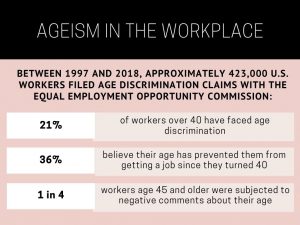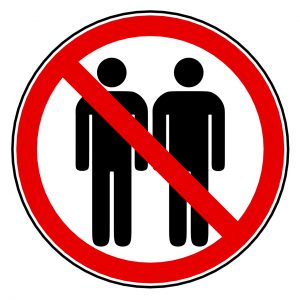After the holiday season is over, you’d think you’d never want to see another cookie or sweet treat again. But no, it just doesn’t work that way, unfortunately. It’s like Willie Nelson created the soundtrack to sugar: you are always on my mind… Ok, it’s time to snap out of it, and take a look at why so many people really find it so hard to break up with the sweet stuff, and how you can take steps to crush those cravings once and for all.
Why You Might Be Craving Sugar

Do you need a super sweet coffee drink every afternoon, or do you find it impossible to resist having dessert or a sugary treat after meals? Or are you snacking on sweets any opportunity you get? You’re not alone: a study published in June 2017 in Appetite found that 86% of people who had food cravings thought about high-calorie foods, specifically, sugary or chocolatey snacks. Not only that, but by most estimates, Americans on average eat 17 – 22 teaspoons of added sugar per day, even though the American Heart Association recommends limiting your intake to 6 teaspoons for women and 9 teaspoons for men.
So what’s with all of these sweet teeth? Are there reasons behind these seemingly unstoppable cravings? Most experts say yes, and knowing why you might be reaching for sugary treats could help you unlock the key to kicking your cravings. Check out the following possible causes, some psychological and some physiological:
Force of Habit
It might sound overly simple, but your sugar cravings might simply be a matter of conditioning. What you eat, including when you eat it and how much of it you eat, can become a habit, especially when those foods feel rewarding to you. And sugar, despite the crashes and other negative side effects it can cause (like impacts on your mood, weight, energy, and risk of disease), does actually make you feel good (and tastes good, too!). This is because it is believed that eating sugar releases dopamine, one of those feel-good chemicals in the brain; in fact, In a 2016 research review, researchers found that processed foods, especially those containing added sugar, can cause habit-forming behaviors.
It’s a Vicious Dietary Cycle
What happens when you eat sugar? Well, your blood sugar spikes and your body releases the hormone insulin to lower it; what often happens after your sugary snack, though, is that the insulin brings your blood sugar level a bit too low, so you start craving something else to raise it and give you a boost of energy. It can turn into a vicious cycle, putting your body on a blood sugar roller coaster that you just can’t seem to get off of. Add to that the fact that, if you’re eating a ton of simple/refined carbohydrates (like foods with added sugar or white-flour based foods), you’re probably not getting enough protein and good fat in your diet, both of which prevent too much insulin from being released, and can help fill you up longer, as well as crush cravings for sweets.
In addition, if you’re not eating a balanced diet, or if you’re not eating enough or regularly, your body might not be releasing enough ghrelin, the hunger hormone. Studies in rats have shown that the rats with more ghrelin ate less of the sweet treats offered to them.
You’re Stressed

What do stress and sugar have to do with each other? You might have an immediate answer: every time I feel stressed at work, I dip into the candy jar. But why? The real reason might be a mix of habit or conditioning, as discussed above, and the actual physical response of your body to stress. When you’re stressed, the hormone cortisol floods your body, releasing glucose from your liver, which raises your blood sugar. As we already noted, fluctuations in blood sugar can cause cravings, so being constantly stressed can also mean constant cravings.
And cortisol might not be your only problem: if you’re low on serotonin, another of those feel-good hormones, because you’re anxious, stressed, or depressed, you might crave more sugar in an attempt to improve your mood, according to some studies.
You’re Not Getting Your Zzzz’s
Poor sleep has been proven to lead to overeating, especially increased sugar consumption, as your body tries to find energy sources to keep it going, and because our internal clock plays a big role in managing the hormones ghrelin and leptin, which promote and suppress food intake. Not only that, but research has shown that even one night of poor sleep can decrease function in the part of the brain responsible for complex judgments and decisions, leading to junk food cravings the next day.
And the kicker? A 2017 research review found that sugary foods can interfere with the quality of your sleep. Oof. More vicious sugar cycles!
The Fake Stuff Is Sabotaging You
Ironically, if you’ve been replacing sugar with some artificial sweeteners, you might be doing more harm than good, and not just because experts are undecided on how safe those sweeteners actually are for our health. Artificial sweeteners tend to be much sweeter than other sugars, which could change your palate, making you crave sweeter and sweeter foods. Need more proof that the sweeter your diet the more you crave sweet things? In one study of people who gave up sweeteners for two weeks, more than 85% of them reported they no longer had cravings for sweets after that time.
Crush Those Cravings
What our last point shows is that going cold turkey on sugar can be a really effective way of getting rid of your cravings, but that’s a tough route to take. Your mind and body might need some other strategies for support as you try to rid yourself of those cravings for good. How to start? Try the following:
- Add more proteins and healthy fats into your diet: try avocados, nuts, pulses like lentils, beans, and chickpeas, olives/olive oil, seeds, fish, Greek yogurt, eggs, or oatmeal with some added nuts and seeds. In addition, anything with fiber is a great bet to keep you feeling fuller longer.
- Be proactive about planning your meals so you don’t get to the point of desperation. In addition, be conscious of your hunger and eat when you feel hungry, so you can avoid dips in blood sugar that could lead to bingeing on sugar.
- Prioritize getting enough sleep: setting yourself a regular bedtime and wake-up time is a great start!
- Stay hydrated – you might sometimes actually confuse thirst with hunger; in fact, research has found that people respond “inappropriately” to hunger and thirst cues 62% of the time! That means that many people eat when they are actually thirsty, not hungry. Drinking enough water can also keep you feeling energized, and so less likely to need to reach for something that you think will give you a pick-me-up.
- Avoid artificial sweeteners
- Trick your body by eating something sour when you want something sweet, to stimulate your taste buds and distract them.
- Give in once in a while, since it has been proven that extremely restrictive diets can just lead to more overeating. A great way to satisfy your craving while not overdoing it is to choose a high quality treat, like one rich dark chocolate truffle, and really savor it.
- When you’re craving sweets, or if you can recognize that you’re engaging in emotional or stress-related eating, wait 10 minutes and try to distract yourself. Try to change your environment, and distract yourself with something else, like calling a friend, taking a walk, or starting something creative. You can even take those habitual craving times and turn them into a healthier habit by doing some exercise at those times, or anytime cravings hit!

- When we think “sugar,” we usually mean refined sugar, but there are healthier forms of sugar that are part of a balanced diet. So satisfy your sugar cravings in a healthier way, with vegetables such as sweet potatoes, squash, beets and carrots, as well as other naturally sweet foods like coconut, bananas, frozen grapes, dates, vanilla, raw cacao and cinnamon (which has been shown to reduce sugar cravings by helping to manage insulin sensitivity), and especially berries, because the sugar in these sweeties is released more slowly than that of other fruits. Bonus points if you make yourself a smoothie that includes sweet fruit, fiber-filled kale, and protein-packed nut butter – or if you craft a delicious pudding from banana, avocado, and cacao!
- Going cold turkey is best for some people (sometimes you just need a clean break), but you might be worried about the side effects, which can be physically uncomfortable, or you might be worried that your habit is just too strong. If so, try retraining your taste buds by gradually cutting out one sweet thing a day or week.
If you feel like sugar has a hold on you, take a step back and take the time to really notice your eating habits, your emotions surrounding those habits, and your common cravings. Then, take that mindfulness about your eating and add in some of the tips we’ve given above, and you’ll be well on your way to kicking that sweet habit.
















